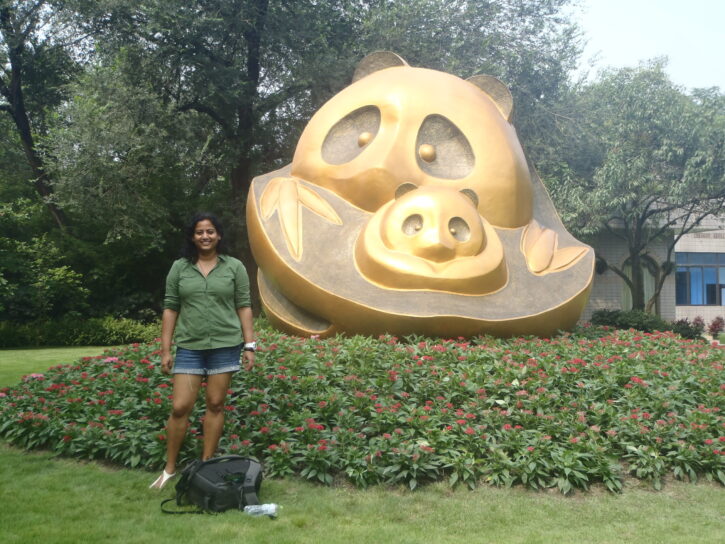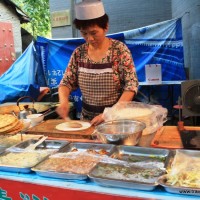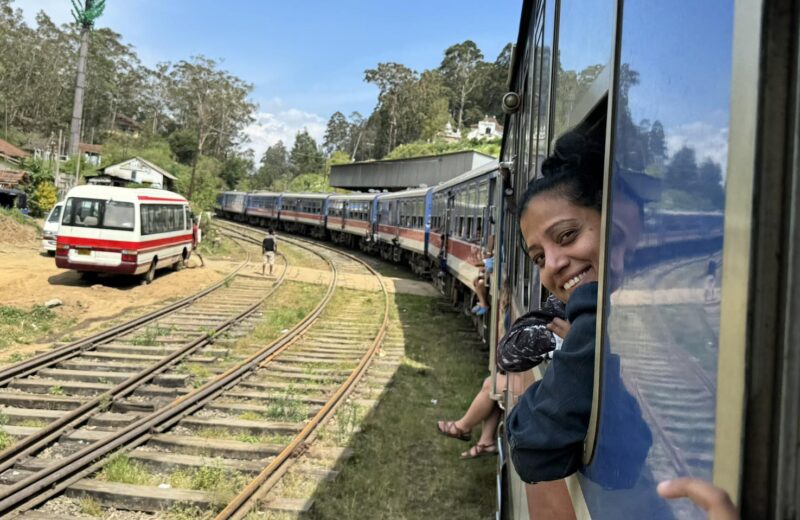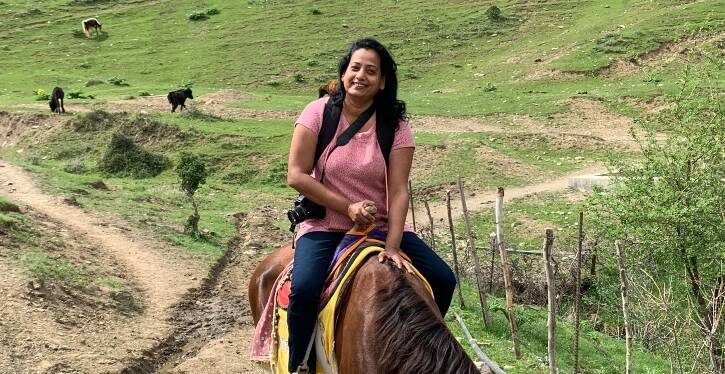The cuddly Panda might its most famous attraction, but Chengdu, a city founded over 2,000 years ago, is the only Chinese city with its name unchanged even today. It has been the capital of Sichuan region since 1368.
When I had embarked on a long trip around China, Chengdu didn’t feature very high on the places I had marked down. My only reason to go there (if I did) was to see the Panda, which I told myself, was an expensive thing to do as well. But two weeks into my journey through China, I ended up on a train to Chengdu and hence this story!
Chengdu’s appeal goes beyond the pandas. But that said, Pandas are its most priced attraction but the city’s laid- back lifestyle (not what you might expect to hear about a Chinese city) and a vibrant nightlife is a definite change from the chaotic capital Beijing or the most touristy Shanghai.
Meet the cuddly residents – the panda
Never mind what you think of animals in captivity, the Panda Base provides the best kept natural environment for Pandas and has effectively managed to save them from extinction in the wild. This is also home to black-necked cranes, red pandas and other rare wildlife. In recent years, China has adopted Panda Diplomacy making this cuddly animal a diplomatic tool as much as a tourist attraction. (Tip: Go early to watch the Panda feeding on tender bamboo shoots. As the day warms up, they retreat into the shade)
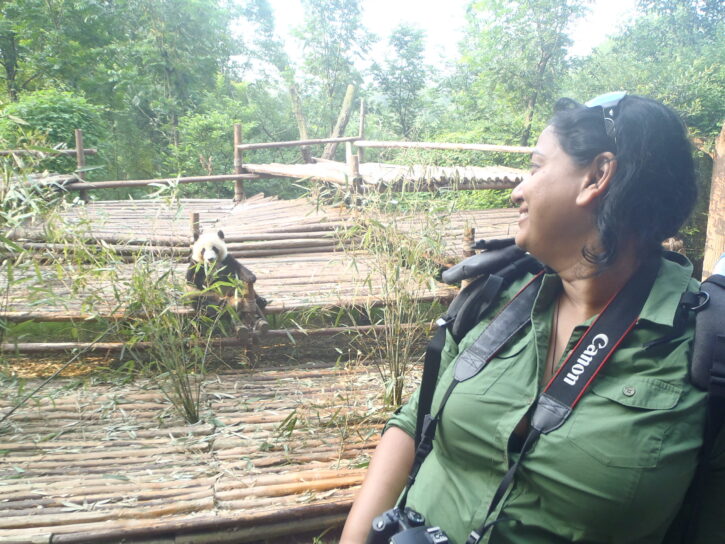
Traditional architecture is stunning
Being one of China’s perennially progressive cities, Chengdu is historically a place where many cultures culminated and hence its architecture is fused with tradition while being extremely modern.
Ancient sites around Chengdu are examples of China’s religious and engineering developments, reflecting the influence of Buddhism and to a great extent, the agricultural history. That said, Chengdu’s most recent manmade treasures are just as fascinating as the ancient one.
The stunning Wenshu Temple, one of the best- preserved Buddhist Temples dating from the Tang dynasty is a marvelous example of Chengdu’s architecture. The uniqueness of the city’s architecture can also be seen in well preserved old buildings like the Kang Jihong Mansion built in the late 1940s or the Heming Teahouse located in People’s Park.
Among the many other reasons for this southwestern city to top the list of must visit places in China, is the Sichuan Pepper, the archaeologically and historically significant Jinsha site and the world’s tallest stone Buddha in Leshan. Chengdu is also home to the regions first Taoist Temple and the world’s oldest water-control project.
Get outside the city
The city itself is in close proximity to a number of beautiful natural destinations like Mount Emei Scenic Area that includes the Leshan Giant Buddha, standing at 71m and carved into the red sandstone. The view from Mount Emei, a popular World Heritage Site is mind blowing. The first Buddhist temple in China was established on the summit of Mount Emei in the 1st century A.D. It is one of Buddhism’s most holy sites. Mount Qingcheng, the birthplace of Chinese Taoism in the second century AD is also easily visited as a day trip. The mountain is dotted with temples built in the Jin and Tang dynasties that celebrate key elements of Taoist teachings.
There is a section of the Great Wall of China which lies underwater after the Chinese government flooded the valley to create the Panjiakou Reservoir. Technical divers find this site particularly rewarding.
Taste the world-famous Sichuan cuisine
Probably the most famous of the Sichuan cuisine is the hotpot, which involves simmering meats, vegetables and mushrooms in a pot, spiced up by fiery Sichuan pepper which leaves a tingling taste on your tongue long after the food is eaten. Sichuanese food is the spiciest food in China and is made famous worldwide by Szechuan chicken or Kung Pao chicken (gong bao ji ding). The bold flavours of Sichuanese cuisine owe their uniqueness to generous use of garlic and the unique Sichuan pepper. Chengdu could very well be rechristened as the UNESCO City of Gastronomy. Exploring Jinli Street will bring you in touch with the city’s historic atmosphere and local snacks like sticky rice cakes, spicy chicken on a stick or fried beef pancakes.
I admit to having had a hard time finding English menus and English speakers. I got scammed. I swore I would not return to China for quite some time. The only exception: traveling to Chengdu to eat Sichuan cuisine. Chengdu dishes are unlike most of the Chinese food eaten in the US or even the UK. Most of the Chinese food eaten outside of China is Americanized or localized. The food in Chengdu is far from these watered-down versions.
Chengdu dishes are more flavorful and are definitely spicier. For true food travelers, the restaurants in Chengdu China don’t offer tourist versions of their dishes. It’s why it’s one of the best places for food travelers.
When eating in Chengdu, all I wanted to do was find spicy Sichuan dumplings. For me, it was on the top of my must eat in Chengdu list! On Jin Li walking street (also considered a Chengdu food street), one of the tourist spots in Chengdu, I found some tender pork dumplings, drenched in a fiery red Sichuan sauce. One of my favorites.
Within seconds of my first bite, my lips were tingling and turning numb. We ate Sichuan dumplings a few more times, including in a pedestrian alley across from the Zara near Niccolo Hotel, and in a private restaurant during our Chengdu Lost Plate food tour. They are not hard to find, and a must-eat in Chengdu.
Don’t miss: Slurp down some “sad” jelly noodles (shangxin liangfen) and expect to literally shed tears. It is not the translucent noodles that make you cry, but the heap of hot chili peppers and oil that guarantee a good bawl.
About Jin Li Walking Street. Jin Li is one of the best places to go for Sichuan street food and sort of like a Chengdu food market. And, if you are short on time, it should be on the top of a list of where to eat in Chengdu.
Visit a Tea House
It can be said on authority that Chengdu is fueled by tea. Tea Houses are an integral part of cultural and social life, evident in thousands of tea houses in the city characterized by bamboo chairs, small square tables, stove, tea set and teapot. Whether business is being discussed or friendships are being forged, these tea houses provide the ideal setting and push in the right direction. The oldest tea houses preserving its authenticity and original Sichuan flavours can be found in the town of Pengzhen attracting hardcore tea lovers who make the for the experience.
Today, the city is witnessing hi-tech start-ups, galleries and shopping malls are springing up rapidly and yet the relaxed atmosphere of drinking tea remains. China’s tea culture originated in Chengdu. The earliest tea trade was in Chengdu, dating back more than 3,000 years. Chengdu has more teahouses than any other city in the world. It is said that people in Chengdu can drink the equivalent of up to seven Hangzhou West Lakes (6.38square kilometers) of tea every year
Did You Know
- Chengdu developed rapidly during WWII following the influx of refugees fleeing Japanese invasion of eastern China. This stimulated trade and commerce, universities sprung up and other centres of learning were established.
- The Jinsha Site was found in February 2001 and is the country’s most important archaeological discoveries. The finds at the site back to the 12th to 7th century BC. You can see over five thousand articles of gold, bronze, jade, ivory and lacquer excavated from the site.
- Characterised by acrobatics, fire-spitting and illusionists, the Sichuan Opera is an excellent place to witness a traditional art form. Watch the famous magical face changing performance, an art practiced exclusively in Sichuan region, with the best being in Chengdu.
- Dujiangyan ancient irrigation system, constructed in 256BC controls the waters from the Min River using natural topographic and hydrological features to divert water to the Chengdu plains. It is the oldest in the world.
***For a fun introduction to bian lian performance, head to Sanguo Teahouse in Jinli alleys and watch performers switch from mask to mask as they dance.
How to see the panda
One of the highlights during my visit to Chengdu was the chance to see the Giant Pandas at the Chendgu Research Base. These cute, white and cuddly pandas are considered to be China’s treasure! There are not a lot of them in the wild, given their delicate nature, so if you intend to see or even hold them (USD350 for a 5 minute cuddle) this is your best bet. Please not that even though you might be willing to pay the said amount, Panda behaviour is not predictable and you might easily be refused.
They are native to south-central China and there are less than 2,000 in the wild and are considered to be a vulnerable species. They continue to be at risk due to loss of habitat combined with the fact that they don’t reproduce quickly.
The normal reproductive rate is a baby once in two years, rather ambitious to expect this because the females are only fertile for 2-3 days a year. It’s no wonder so many early conservation efforts failed in the past.
Pandas are rarely seen in the wild – but your best chance of seeing one in China would be at the Chengdu Research Base for Pandas. Remember to go early especially during summer – or the pandas will quickly disappear under shade.
Ideally, you should also sit through the presentation to learn all about these animals.
Getting there
Plenty of public transport options are available as it is a popular day trip from Chengdu. You could get a shared taxi as well.
Things to know
- The best time to visit is early. Pandas are active in the morning (9 – 10 AM) and it is also their feeding time.
- The centre opens from 7.30 am until 6 pm.
- Entry is 10 USD. Free for children under 4.3 feet in height.
- The base can get crowded, but the further you move into the center the more the crowd disperses
- Close contact, taking pictures with pandas, and holding the young are currently prohibited.
- Be ready for a lot of walking as the panda base is large.
There are quite a few panda conservation reserves all over the country. The Sichuan Panda Sanctuaries (the covers 7 natural reserves) has nearly 70% of the world’s wild panda population and is a designated World Heritage Site.

